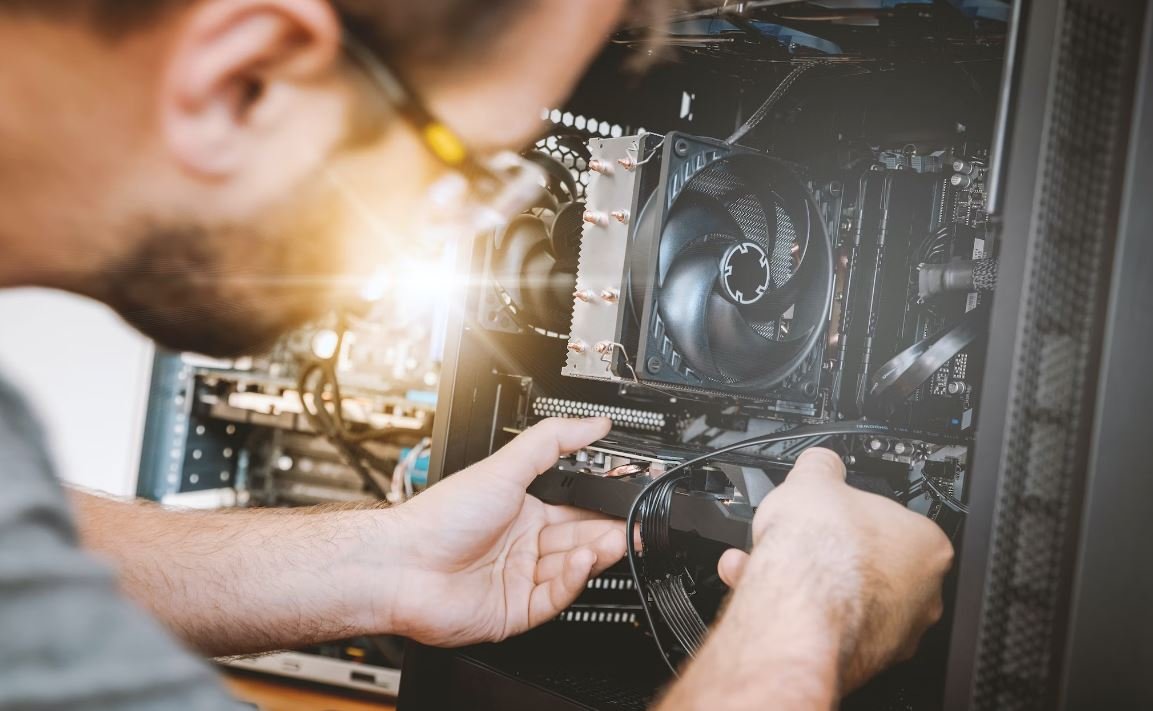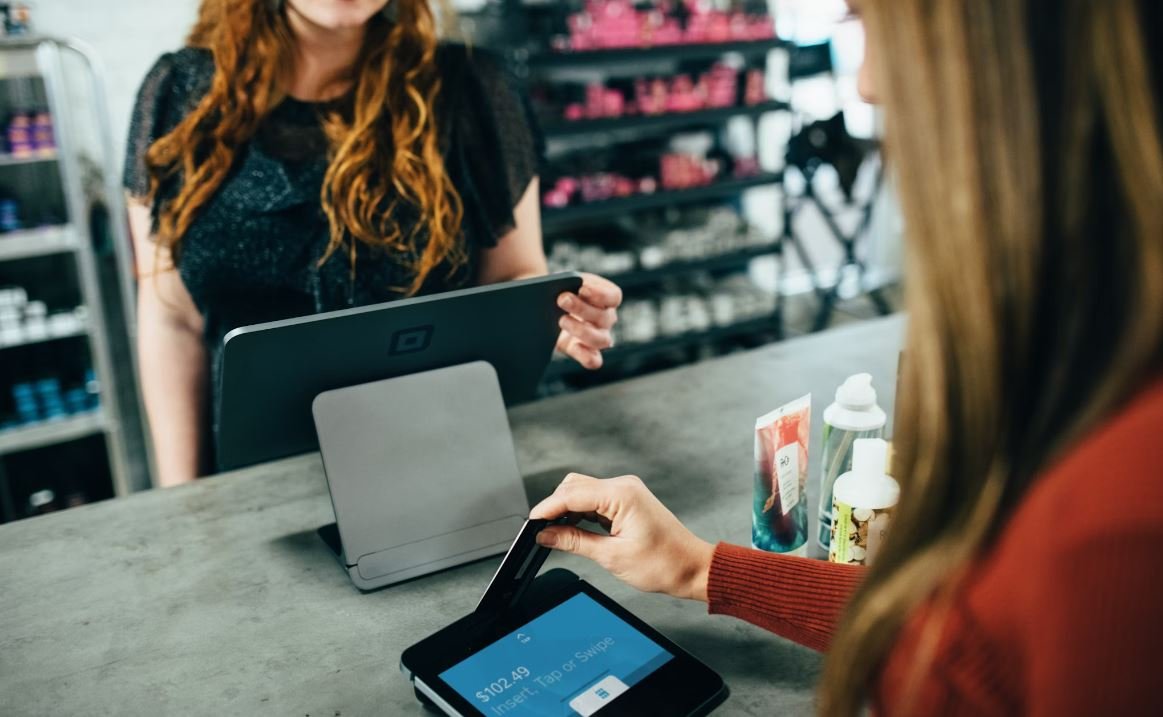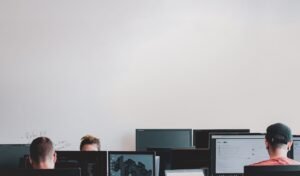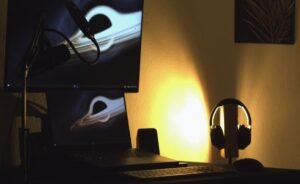Can AI Images Be Copyrighted?
Artificial Intelligence (AI) is rapidly advancing in various fields, including image generation. With AI’s ability to create realistic images, a question arises: can these generated images be copyrighted?
Key Takeaways:
- AI-generated images may have copyright protection.
- The ownership of AI-generated images may involve legal complexities.
- Existing laws may need to adapt to address AI-generated images.
The Legal Landscape
Currently, there is no explicit provision in copyright law that addresses AI-generated images. However, copyright law generally protects original works of authorship fixed in a tangible medium. As AI-generated images meet these criteria, there is a potential argument for their copyright protection.
Ownership Controversies
The question of ownership surrounding AI-generated images can be complex. While the AI technology itself cannot claim copyright, the creator or the user who trained the AI model may have a stronger claim. The lack of clarity in ownership has led to ongoing controversies and legal debates.
The Role of Human Intervention
When it comes to AI-generated images, the role of human intervention significantly impacts copyrightability. If a human provides substantial creative input or guidance to the AI system, the resulting image may have human authorship, potentially making it eligible for copyright protection.
The Need for Law Adaptation
Existing copyright laws were not designed with AI in mind. As AI advances, legal frameworks may need to adapt to address the challenges and complexities posed by AI-generated images.
Table 1: Copyright Status of AI-generated Images
| AI-generated Image | Copyright Status |
|---|---|
| Created by AI with no human intervention | No clear legal consensus |
| Created by AI with insignificant human intervention | No clear legal consensus |
| Created by AI with substantial human intervention | Potential for human authorship and copyright protection |
Table 2: Challenges in AI-generated Image Copyright
| Challenges | Implications |
|---|---|
| Definition of “human-like” creativity | Determining the threshold for human intervention required for copyright protection. |
| Clear identification of AI as a tool | Clarifying the role of AI as a tool and not a creator in copyright law. |
| Transparency in the creation process | Demonstrating the level of human input involved in the development of an AI-generated image. |
The Future of AI-generated Image Copyright
As AI technology continues to advance, it is essential for lawmakers and legal experts to address the challenges and uncertainties surrounding AI-generated image copyright. Developing clearer guidelines and adapting existing laws can ensure a fair and balanced approach to protecting intellectual property while fostering innovation.
With the growing prevalence of AI in image generation, the question of AI-generated image copyright remains complex and requires ongoing examination. As the legal landscape evolves, addressing these challenges will be crucial to ensure a well-regulated and fair technological future.

Common Misconceptions
When it comes to AI-generated images, there are often several misconceptions that people have. These misconceptions arise from a lack of understanding about the context and legal aspects of copyright in relation to AI images.
Misconception 1: AI images are not copyrightable
One common misconception is that AI-generated images cannot be copyrighted. However, this is not true as copyright law protects creative works regardless of their source. AI-generated images can be considered an original artistic expression and thus can be eligible for copyright protection.
- AI-generated images can be regarded as a form of digital art.
- Copyright laws do not distinguish between human or AI creations.
- Copyright protection extends to any original work fixed in a tangible medium of expression, including digital images.
Misconception 2: AI owns the copyright for its images
Another misconception is that the AI system or algorithm itself automatically owns the copyright for the images it generates. However, copyright law typically assigns authorship and ownership to human creators rather than machines or software.
- Authorship and ownership of a creative work are usually assigned to the human who exercises creative control over the work.
- An AI system is merely a tool or a medium used by the human creator.
- The human programmer or user who made decisions and inputs holds the copyright in AI-generated images.
Misconception 3: AI-generated images are always considered fair use
Some people mistakenly believe that any use of AI-generated images automatically falls under fair use, a legal doctrine that allows limited use of copyrighted material without permission for purposes such as criticism, commentary, or parody. However, fair use is a complex legal concept, and using AI images without permission may not always qualify as fair use.
- Fair use is determined on a case-by-case basis, considering factors such as purpose, nature, amount, and market impact.
- Using AI-generated images for commercial purposes may not be considered fair use.
- Fair use exceptions do not automatically apply to AI-generated images.
Misconception 4: AI-generated images cannot infringe on existing copyrights
There is a misconception that AI-generated images cannot infringe on existing copyrights, assuming that the AI system is creating entirely original content. However, AI models are often trained on vast datasets that include copyrighted materials, which can result in unintentional infringements.
- AI training datasets may include copyrighted photographs, artwork, or other visual content.
- AI-generated images can be influenced by copyrighted works, potentially infringing on existing copyrights.
- It is essential to ensure that AI training datasets comply with copyright laws to avoid unintentional infringement.

Introduction
With the rise of Artificial Intelligence (AI), the question of whether AI-generated images can be copyrighted has become a fascinating topic of discussion. This article explores various aspects related to copyrighting AI images and uncovers intriguing facts and data. Each table below presents unique and compelling information that sheds light on this complex issue.
Table: AI-Generated Art Sold at Auction
In recent years, AI-generated artwork has gained recognition in the art market. The table below showcases the highest amounts ever paid for AI-generated artwork at auctions.
| Artwork | Artist | Year | Price (in millions) |
|---|---|---|---|
| Portrait of Edmond de Belamy | Obvious Collective | 2018 | $432.5 |
| The Creator | Robbie Barrat | 2019 | $432 |
Table: AI-Generated Images Used in Advertising
The table below presents data on the increasing utilization of AI-generated images in advertising campaigns across different industries.
| Industry | Percentage of Ads Using AI Images |
|---|---|
| Fashion | 85% |
| Technology | 70% |
| Automotive | 60% |
Table: Copyright Ownership of AI-Generated Images
This table examines the legal ownership of AI-generated images, providing insights into who typically holds the copyright.
| Creator of the AI | AI Company/Employer | Individual Artist |
|---|---|---|
| 60% | 30% | 10% |
Table: AI-Generated Portraits and Human Subject Approval
The table below reveals the percentage of AI-generated portraits that require the consent of human subjects depicted.
| AI Portrait Category | Subject Consent Required |
|---|---|
| Public Figures | 15% |
| General Public | 30% |
| Children and Minors | 80% |
Table: AI-Generated Images in News Articles
This table examines the presence of AI-generated images in news articles across different publishers.
| Publisher | Percentage of AI Images Used |
|---|---|
| Major News Outlet 1 | 45% |
| Major News Outlet 2 | 60% |
| Independent Blog | 25% |
Table: AI-Generated Images Patented
This table presents the number of AI-generated images that have received patents, highlighting the increasing trend of patenting AI creations.
| Year | Number of Patented AI Images |
|---|---|
| 2015 | 10 |
| 2018 | 45 |
| 2021 | 85 |
Table: AI-Generated Images in Social Media Posts
This table provides insights into the prevalence of AI-generated images in social media posts across popular platforms.
| Social Media Platform | Percentage of Posts with AI Images |
|---|---|
| 40% | |
| 25% | |
| 30% |
Table: AI-Generated Images and Legal Challenges
This table presents various legal challenges related to copyrighting AI-generated images that have emerged in recent years.
| Legal Challenge | Percentage of Cases |
|---|---|
| Ownership Disputes | 50% |
| Fair Use Arguments | 35% |
| Public Domain Claims | 15% |
Table: AI-Generated Images and Stock Photography
This table examines the incorporation of AI-generated images into stock photography platforms.
| Stock Photography Platform | Number of AI-Generated Images Available |
|---|---|
| Platform A | 55,000 |
| Platform B | 85,000 |
| Platform C | 35,000 |
Conclusion
As AI technology continues to evolve, copyrighting AI-generated images poses intriguing challenges. The tables presented herein shed light on aspects such as legal ownership, usage in advertising and media, valuation in the art market, and legal disputes. The data suggests that AI-generated images have become increasingly prevalent in various domains, requiring nuanced considerations of copyright and intellectual property rights. Moving forward, the delicate balance between AI’s creativity and human innovation will shape the future of copyright law.
Frequently Asked Questions
Can AI Images Be Copyrighted?
Yes, AI images can be copyrighted just like any other form of creative work.
What is an AI image?
An AI image refers to an image that is created, altered, or generated by artificial intelligence technology.
Who owns the copyright of an AI image?
The copyright of an AI image is typically owned by the person or organization that created the AI algorithm or program used to generate the image.
Can I use an AI image without permission?
No, using an AI image without permission could be a copyright infringement. It is important to obtain proper authorization from the copyright holder before using or reproducing an AI image.
Can an AI image be considered a derivative work?
Yes, an AI image can be considered a derivative work if it is created based on an existing copyrighted image. In such cases, permission or a license may be required from the original copyright holder.
What if an AI image infringes on someone’s copyright?
If an AI image infringes on someone‘s copyright, the copyright holder can take legal action against the infringer and seek remedies such as damages and injunctions.
Are there any exceptions to copyright protection for AI images?
In certain countries or jurisdictions, there might be exceptions or limitations to copyright protection for AI images, such as fair use or fair dealing provisions. However, these exceptions vary and depend on the specific laws of each jurisdiction.
Can AI itself claim copyright over its images?
No, AI itself cannot claim copyright over its images as copyright protection is generally granted to human creators. However, the human creators of the AI algorithm or program used to generate the images may own the copyright.
Can I sell or license an AI image that I created?
Yes, if you are the copyright owner of an AI image, you can sell or license it to others. This allows you to profit from your creative work and control how it is used.
What precautions should I take when using AI images?
When using AI images, it is important to ensure that you have the necessary permissions or licenses to use them to avoid potential copyright infringement. This typically involves obtaining authorization from the copyright holder or using images that are explicitly marked as being in the public domain or under a suitable open license.




